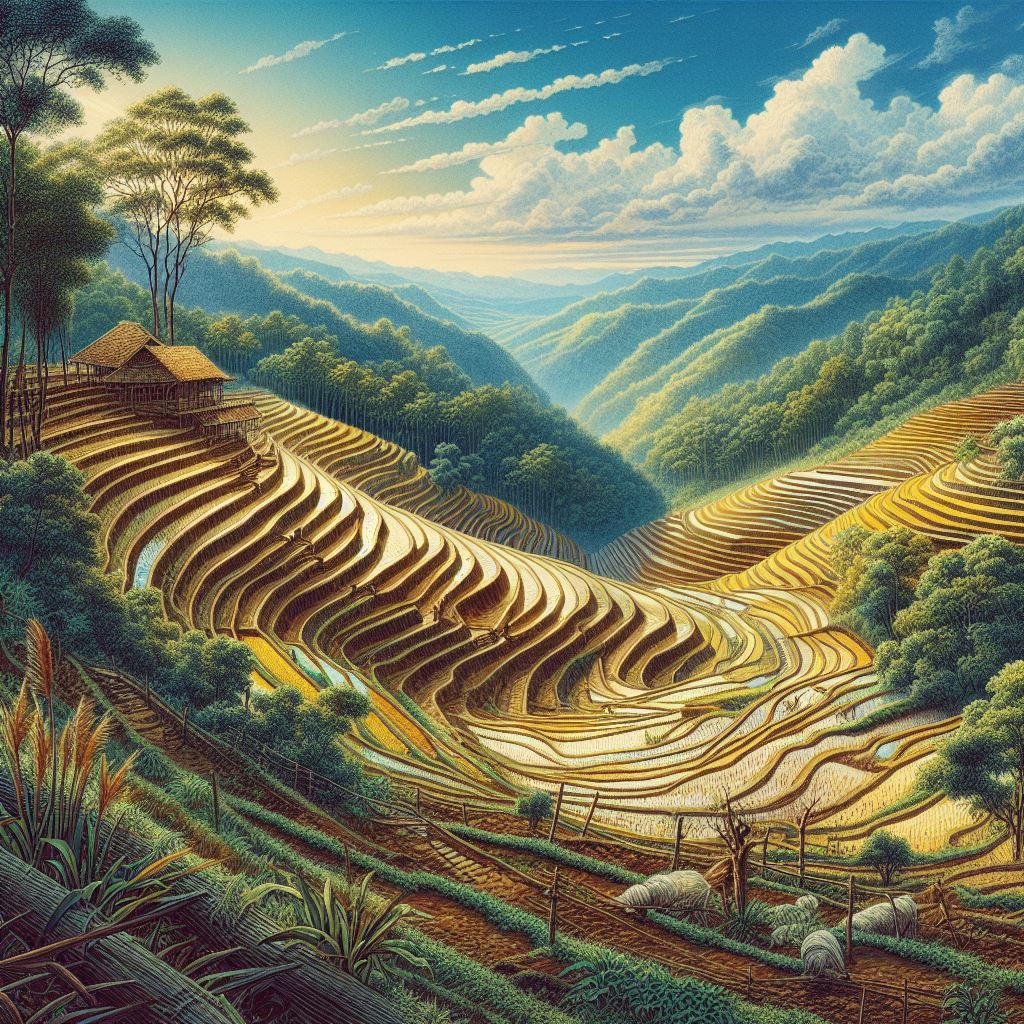
Terracing 2.jpg

Terracing
Definition:
Terracing is a soil conservation practice used to reduce soil erosion and water runoff on sloping terrain by creating level areas, or terraces, along contour lines. Terraces consist of embankments or ridges constructed across the slope with channels or drains to divert water and prevent soil movement downslope. Terracing helps conserve soil, retain moisture, and enhance agricultural productivity on hilly or mountainous landscapes.
Practical Advice:
- Assessing Slope and Soil: Conduct a slope analysis and soil evaluation to determine the suitability and necessity of terracing. Identify areas with steep slopes, high erosion potential, or shallow soils prone to erosion, where terracing can effectively mitigate erosion risks and improve land management practices.
- Designing Terrace Layout: Design terrace layouts based on the slope gradient, soil type, and field topography to optimize water retention and erosion control. Determine terrace spacing, width, and height to accommodate runoff volumes, minimize soil disturbance, and maximize terrace stability and functionality.
Valuable Assistance:
- Constructing Terraces: Implement proper construction techniques to build terraces that withstand erosion and promote soil conservation. Use appropriate equipment and materials, such as earth-moving machinery, retaining walls, and drainage pipes, to construct terraces according to design specifications and engineering standards.
- Maintaining Terrace Integrity: Maintain terrace integrity through regular inspection and maintenance to ensure long-term effectiveness and stability. Monitor terrace surfaces for signs of erosion, compaction, or sedimentation, and repair any damage promptly to prevent soil loss and preserve terrace functionality.
Enlightening Details:
- Improving Water Infiltration: Terracing enhances water infiltration and retention by slowing down surface runoff and promoting soil absorption. Terrace ridges and channels reduce water velocity, allowing more time for water to percolate into the soil and replenish groundwater reserves, thereby improving soil moisture availability for crops.
- Preventing Soil Erosion: Terraces serve as barriers to prevent soil erosion by intercepting runoff and reducing soil movement downslope. Terrace embankments and channels trap sediment, control erosion, and stabilize slopes, preserving soil fertility and protecting downstream water bodies from sedimentation and pollution.
Actionable Suggestions:
- Adopting Conservation Practices: Integrate terracing with other soil conservation practices, such as cover cropping, mulching, and crop rotation, to enhance erosion control and soil health. Implement conservation agriculture techniques that complement terracing to maximize erosion reduction and sustainable land management benefits.
- Seeking Technical Support: Seek technical assistance and guidance from soil conservation experts, agricultural extension services, and government agencies when planning and implementing terracing projects. Access resources, training, and funding opportunities to support terracing initiatives and promote effective erosion control strategies.
Conclusion:
Terracing is an effective soil conservation practice for mitigating erosion and improving water management on sloping agricultural lands. By implementing terraces strategically and integrating them with complementary conservation practices, farmers can enhance soil health, protect water resources, and sustainably manage landscapes for long-term agricultural productivity and environmental resilience.
Fall off the barn roof and busted your keister? Life on the farm or ranch can be tough on the bum. Need a break? Laugh it off at FarmerCowboy.com, the #1 farm humor site. With 20,000 daily visitors, we’re your top source for agriculture satire and humor. Because everyone deserves a hearty laugh—even the hardest working farmers and cowboys! Join us and turn those long days into fun tales at FarmerCowboy.com.

Originally posted 2018-05-21 14:55:06.
Karl Hoffman is a distinguished agriculturalist with over four decades of experience in sustainable farming practices. He holds a Ph.D. in Agronomy from Cornell University and has made significant contributions as a professor at Iowa State University. Hoffman’s groundbreaking research on integrated pest management and soil health has revolutionized modern agriculture. As a respected farm journalist, his column “Field Notes with Karl Hoffman” and his blog “The Modern Farmer” provide insightful, practical advice to a global audience. Hoffman’s work with the USDA and the United Nations FAO has enhanced food security worldwide. His awards include the USDA’s Distinguished Service Award and the World Food Prize, reflecting his profound impact on agriculture and sustainability.






